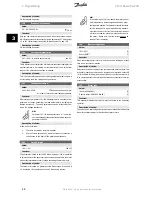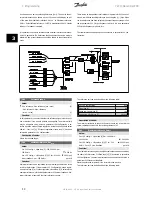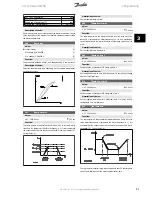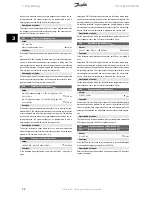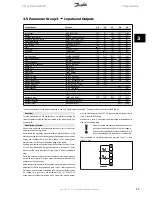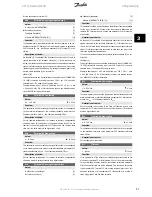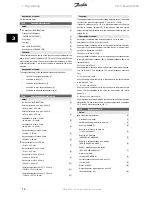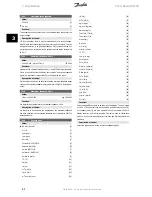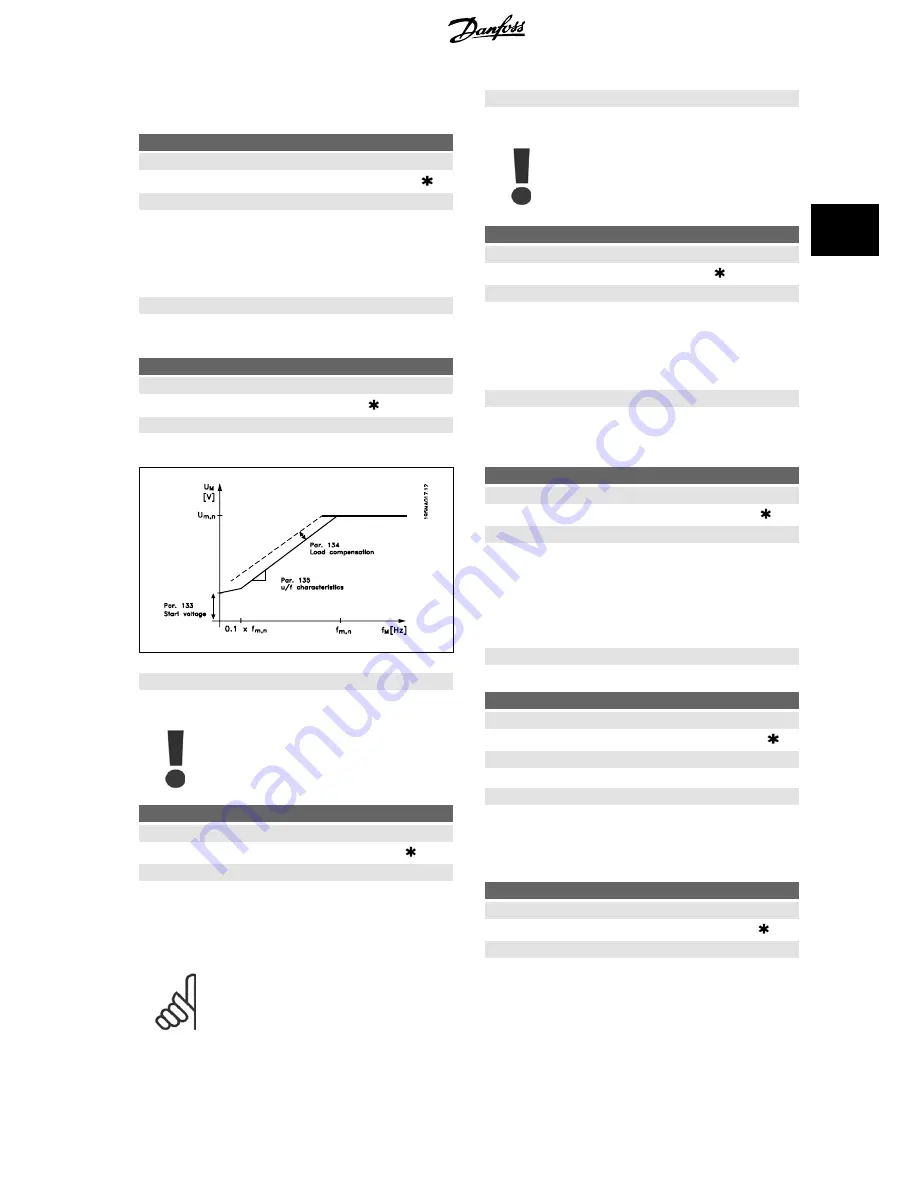
[4] and that in parameter 120
Start delay
a time is set, and that a refer-
ence signal is present.
132
DC brake voltage
Value:
0 - 100% of max. DC brake voltage
0%
Function:
In this parameter, the DC brake voltage is set which is to be activated at
stop when the DC brake frequency set in parameter 127
DC brake cut-
in frequency
is reached, or if
DC braking inverse
is active via a digital
input or via serial communication. Subsequently, the DC brake voltage
will be active for the time set in parameter 126
DC brake time
.
Description of choice:
To be set as a percentage value of the max. DC brake voltage, which
depends on the motor.
133
Start voltage
Value:
0.00 - 100.00 V
Depends on unit
Function:
A higher start torque can be obtained by increasing the start voltage.
Small motors (< 1.0 kW) normally require a high start voltage.
Description of choice:
The factory setting will be suitable for must applications, the value may
need to be increase gradually for high torque application.
Warning: If the use of start voltage is exaggerated, this
may lead to over-energizing and overheating of the
motor and the frequency converter may cut out.
134
Load compensation
Value:
0.0 - 300.0%
100.0%
Function:
In this parameter, the load characteristic is set. By increasing the load
compensation, the motor is given an extra voltage and frequency sup-
plement at increasing loads. This is used e.g. in motors/applications in
which there is a big difference between the full-load current and idle-load
current of the motor.
NB!
If this value is set too high, the frequency converter
may cut out because of overcurrent.
Description of choice:
If the factory setting is not adequate, load compensation must be set to
enable the motor to start at the given load.
Warning: Should be set to 0% in connection with syn-
chronous and parallel-coupled motors and in the case
of quick load changes. Too high load compensation
may lead to instability.
135
U/f-ratio
Value:
0.00 - 20.00 V/Hz
Depends on unit
Function:
This parameter enables a shift in the ratio between output voltage (U)
and output frequency (f) linearly, so as to ensure correct energizing of
the motor and thus optimum dynamics, accuracy and efficiency. The U/
f-ratio only affects the voltage characteristic if a selection has been made
of
Constant torque
[1] parameter 101
Torque characteristic.
Description of choice:
The U/f-ratio is only to be changed if it is not possible to set the correct
motor data in parameter 102-109. The value programmed in the factory
settings is based on idle operation.
136
Slip compensation
Value:
-500 - +500% of rated slip compensation
100%
Function:
Slip compensation is calculated automatically, on the basis of such data
as the rated motor speed n
M,N
. In this parameter, the slip compensation
can be fine-tuned, thereby compensating for tolerances on the value for
n
M,N
. Slip compensation is only active if a selection has been made of
Speedregulation, open loop
[0] in parameter 100
Configuration
and
Con-
stant torque
[1] in parameter 101
Torque characteristic
.
Description of choice:
Key in a % value.
137
DC hold voltage
Value:
0 - 100% of max. DC hold voltage
0%
Function:
This parameter is used to keep the motor (holding torque) at start/stop.
Description of choice:
This parameter can only be used if a selection has been made of
DC
hold
in parameter 121
Start function
or 122
Function at stop
. To be set
as a percentage value of the max. DC hold voltage, which depends on
the choice of motor.
138
Brake cut out value
Value:
0.5 - 132.0/1000.0 Hz
3.0 Hz
Function:
Here you can select the frequency at which the external brake is released,
via the output defined in parameter 323
Relay output 1-3
or 341
Digital
output, terminal 46
(optionally also terminal 122 and 123).
VLT® Decentral FCD
3 Programming
MG.04.B8.02 - VLT is a registered Danfoss trademark
47
3
Summary of Contents for VLT Decentral FCD 300
Page 112: ......
















